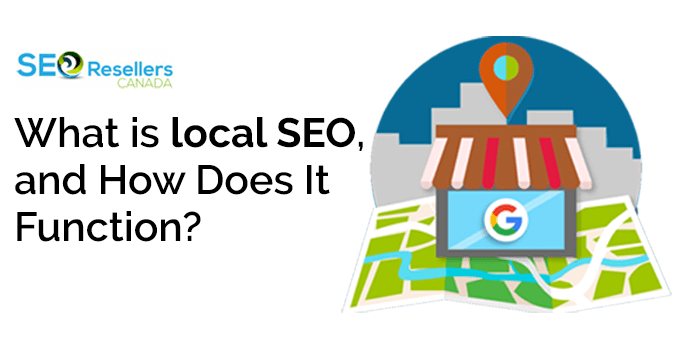Imagine clicking on a link with high hopes of discovering something amazing, only to end up on a page that greets you with a frustrating “404 Error – Page Not Found” message. You’d feel irritated, that’s for sure!
Now as a business owner, you wonder, is there anything I can do to avoid the same fate of my websites? Yes, you can, with Google Analytics 4. GA4 isn’t just an upgrade; it’s a complete transformation. A Link building company using GA4 empowers you with an unprecedented understanding of user behaviour and data-driven decision-making. You might be surprised to know that almost 8.4 million websites use GA4 in 2023.
Join us on this journey as we unravel the secrets of using GA4 to monitor and mend those pesky broken links that might be lurking on your website.
1- Understanding Broken Links
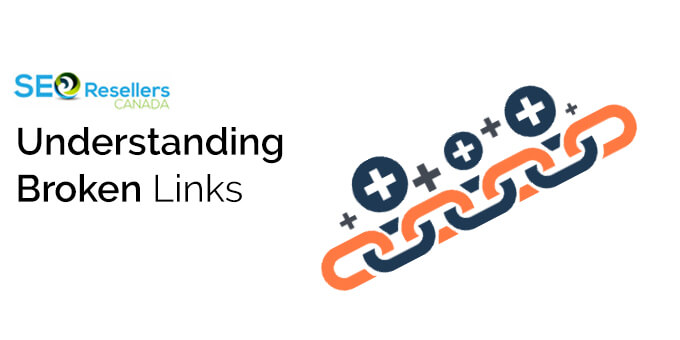
Broken links, also known as dead links, are those pesky hyperlinks on a website that lead to non-existent or inaccessible pages. Not only do they annoy users, but they can also harm your website’s SEO efforts, impacting its ranking on search engine results.
1.1- Impact of Broken Links on SEO and User Experience
Now, let’s talk about the real deal – how do these seemingly harmless broken links affect your website and its standing in the digital universe? Brace yourself because the consequences are far from trivial!
- SEO Sorrow: Search engines, like Google, are constantly crawling and indexing websites to determine their ranking in search results. Broken links send out signals of neglect and poor maintenance, causing search engines to lose faith in your website’s reliability. As a result, your website’s SEO ranking may suffer, burying your precious pages deep within the search abyss.
- User Experience Woes: Picture yourself as a user, eagerly exploring a website for valuable information. Suddenly, you encounter broken links that throw you off track and disrupt your seamless browsing experience. Frustration sets in, and you might just swear not to come to this site again and head for a better (competitor’s) site.
1.2- Different Types of Broken Links
Just like the diverse monsters lurking in the forest, broken links come in different forms, each with its unique identifier. Let’s go through this quickly with common link errors:
- 404 – Page Not Found: This is the most annoying one! This occurs when a link points to a page that no longer exists on the server. This is really harmful to your website. In fact, if people find a 404 page, there is a 73.72% chance they will not come back to your site!
- 500 – Internal Server Error: It may be the server’s fault. This unsettling encounter happens when something goes awry on the website’s server, leaving the link inaccessible. It’s like getting trapped in a room with no doors or windows!
- 503 – Service Unavailable: Similar to a hibernating bear, this error signifies that the server is temporarily unable to handle the request. The link may work later, but for now, there is no hope it might get you the piece of information you were looking for!
1.3- How Broken Links Harm Website Credibility
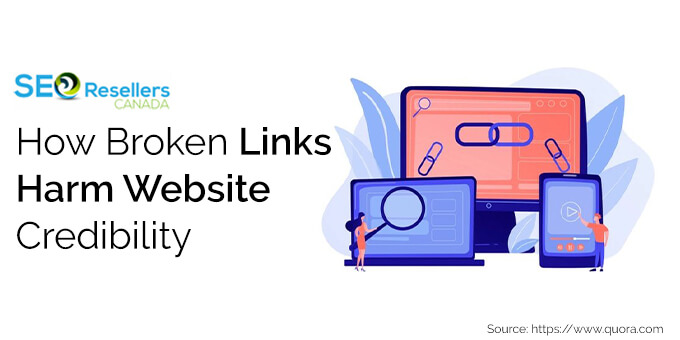
In any business, credibility is key! Trust is the invisible thread that binds you and your audience. Unfortunately, broken links can gnaw away at that trust and tarnish your website’s reputation. Imagine someone arriving at your website only to be greeted by a series of broken links. It’s not the best first impression, right? Ahrefs stated that almost 74.5% of websites are lost due to broken external and internal links. Here’s how they do it:
- Lost Trust: When you have a question, and you ask somebody for help. Imagine if that person misguides you; the feeling that you get is really irritating. That’s how users feel when they encounter broken links on your website. Their trust in your content and recommendations diminishes faster than a melting popsicle on a hot summer day.
- Negative Brand Perception: Your website is a reflection of your brand. Broken links signal negligence and a lack of attention to detail. Just like a crack in a beautiful painting, these broken links mar the image of your brand and leave a negative impression on visitors.
- Missed Opportunities: Every link that leads nowhere is a missed opportunity. Whether it’s a potential customer, a partner, or a loyal reader, broken links can stand in the way of valuable connections and collaborations.
2- Setting Up Google Analytics [GA4]
![Setting Up Google Analytics [GA4] Setting Up Google Analytics [GA4]](https://seoresellerscanada.ca/wp-content/uploads/2023/08/Setting_Up_Google_Analytics-image.jpg)
Google Analytics 4 was launched in order to provide deep insights into user behaviour. A company for link building Canada works tirelessly to improve the overall experience of your website. It is being used by almost 1.2 million WordPress sites around the world and continues to soar in popularity. Remember that the deadline for the adoption of GA4 is by July 2023, and it’s really necessary for you to do so to gain an edge over competitors.
2.1- Creating a GA4 Property for Your Website
Before we plunge into monitoring broken links, let’s first set up a GA4 property for our website. Now, if you’re a Google Analytics pro, you might find this step a breeze. But hey, worry not if you’re new to this; we’ve got your back and will guide you through every single step. Together, we’ll make sure you’re all set to unleash the power of Keyword Research with GA4.
- Logging into GA4: First things first, hop on to your Google Analytics account. If you don’t have one yet, head over to analytics.google.com and sign up – it’s as easy as pie!
- Creating Your GA4 Property: Once you’re in, creating a GA4 property is smoother than spreading butter on warm toast. Click on “Admin” at the bottom left corner of the screen, and then select “Create Property.” Give it a name that best represents your website – Remember, be creative!
- Configuring Your Property: Fill in the necessary information about your website. You’ll also get a unique Measurement ID – save it; we’ll need it later.
Now that we have got our GA4 property set up, it’s time to fine-tune some tracking codes on our website!
2.2- Installing GA4 Tracking Code on Your Site
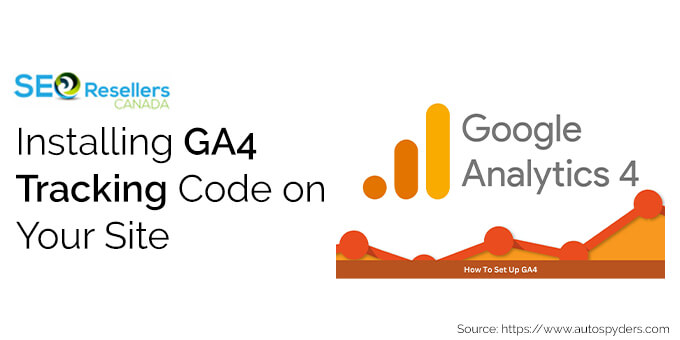
- The Tag Manager Trick: To keep things organized and maintain a touch of burstiness, we’ll use Google Tag Manager (GTM) to add the GA4 tracking code.
- Creating a GA4 Configuration Tag: Within GTM, create a new GA4 Configuration Tag using the Measurement ID we got earlier. Let’s keep our fingers on the keyboard, for this one’s going to be a breeze.
- Firing the Tag: We’ll trigger our GA4 Configuration Tag to fire on all pages of our website. This way, we won’t miss a single opportunity to track those pesky broken links.
- Publishing Your GTM Container: Once you’ve set up everything, it’s showtime! Hit that “Publish” button on GTM and let the magic unfold as the tracking code gets deployed across your website.
Now that we’ve gracefully handled the tracking code installation, let’s proceed to the better part – setting up custom events for link tracking!
2.3- Setting Up Custom Events for Link Tracking
It’s time to put on our creative hats and add some custom events to track those links like a pro!
- Defining the Events: Choose meaningful names for your custom events, reflecting what you want to track. You can go funky or keep it classy; as long as it resonates with your website’s image, it’s a win! Google is an expert in this, as it covers up to 300 Events and 30 conversions. Go on!
- Event Triggers: Decide when and where these events should trigger. Whether it’s when someone clicks on a link or hovers over it like an excited squirrel, set the triggers that align with your monitoring goals.
- Broken Link Destination: Now comes the satisfying part – setting up a destination for those broken links. It could be a dedicated thank-you page or a quirky 404 error page – let your creativity flow!
- Monitoring KPIs: Finally, let’s talk KPIs – Key Performance Indicators. Keep a close eye on metrics like the number of broken links, their sources, and the most affected pages. This data will empower you to keep your website shipshape and running smoothly.
Pro Tip: When updating links, remember to choose the most relevant and appropriate target pages. GA4 link building Canada, when used wisely, can provide a smooth sailing experience even when detours are necessary.
3- Fixing Broken Links with GA4
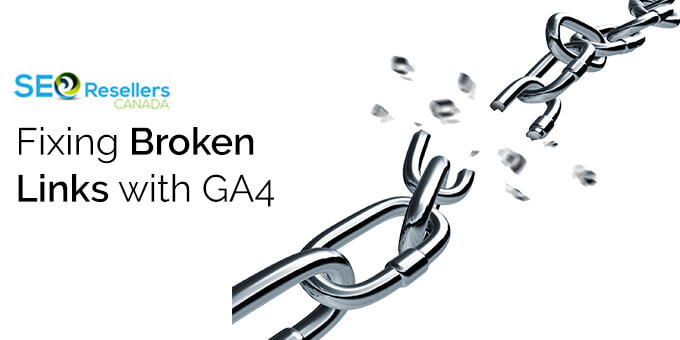
We’ve all been there—clicking on a link with the hope of getting new data, only to be met with a 404-error page. It’s frustrating, it’s annoying, and it’s bad for your website’s health. Don’t worry; we have you covered with this GA4 for beginner’s guide!
3.1- Updating or Correcting Broken Internal Links
The internal links connect various corners of your website, guiding your visitors from one captivating page to another. But what happens when these paths turn into dead ends? Don’t panic! GA4 is your compass, pointing you in the right direction to update or correct those broken internal links.
Here’s how you can do it:
- Identify the Culprits: GA4’s powerful tracking capabilities allow you to spot those pesky broken internal links with ease. Dive into your GA4 dashboard and look for the “Page Not Found” or “404 Error” reports. We are sure that this will lead you straight to the heart of the problem.
- Link Maintenance is Key: Once you’ve identified the problem areas, it’s time to roll up your sleeves and get to work. Update or correct the URLs of the broken internal links, ensuring they lead to the right destinations. Remember, a well-maintained link structure is the backbone of a healthy website.
3.2- Handling Broken External Links

External links are used in case you want to support your website’s content with some credible sources. But what happens when a user clicks on the link only to be disappointed with a torn or ineffective link, like a broken bridge? It may capsize the credibility of your own website. That’s where GA4 comes in handy!
Here’s how to avoid these broken extensions:
- Spotting Trouble from Afar: GA4 enables you to keep a watchful eye on your external links, monitoring their performance and detecting any that lead to the abyss of 404 errors. Stay on top of your game by regularly checking the “Referral Traffic” and “External Links” reports.
- The Art of Redirects: When you come across broken external links, don’t abandon ship! Instead, use the art of redirects to steer your visitors back on course. Implement 301 redirects to lead them to the right destination, showing that even a detour can lead to a happy ending.
3.3- Addressing Complex Link Structure Issues
Link structures – the intricate mazes that can leave even the most seasoned webmasters scratching their heads in confusion. But you are in luck, for GA4 is armed with the knowledge to address complex link structure issues and restore harmony to your website.
Let’s navigate through the maze together:
- Audit and Simplify: Start by conducting a thorough audit of your website’s link structure and Keyword Research. Identify any convoluted pathways that lead to dead ends or confusing loops. Simplify the structure to create a user-friendly experience, and remember; simplicity is the ultimate sophistication.
- Anchor Text Adventure: Anchor text – the guiding beacons that lead your visitors to their desired destinations. Ensure that your anchor texts are descriptive and relevant, providing clear signals to both users and search engine algorithms.
Pro Tip: To keep your links strong and resilient, make it a habit to perform regular link checks with GA4. Prevention is better than a broken-link cure!
4- Final thoughts
With GA4 as your trusty companion, fixing broken links becomes a thrilling exploration rather than a dreaded assignment. Embrace the adventure, and watch as your website navigates the vast ocean of the internet, providing an unforgettable experience for all who dare to explore its wonders.
GA4 stands as a shining beacon of innovation, fearlessly embracing the future with its advanced features and user-centric approach. It grants us the power to navigate the complexities of the digital landscape, providing a comprehensive understanding of our users’ actions and preferences across various platforms. With GA4 as our unwavering guide offered by a reputable digital marketing agency, we can confidently navigate towards success.





![Setting Up Google Analytics [GA4] Setting Up Google Analytics [GA4]](https://seoresellerscanada.ca/wp-content/uploads/2023/08/Setting_Up_Google_Analytics-image.jpg)






